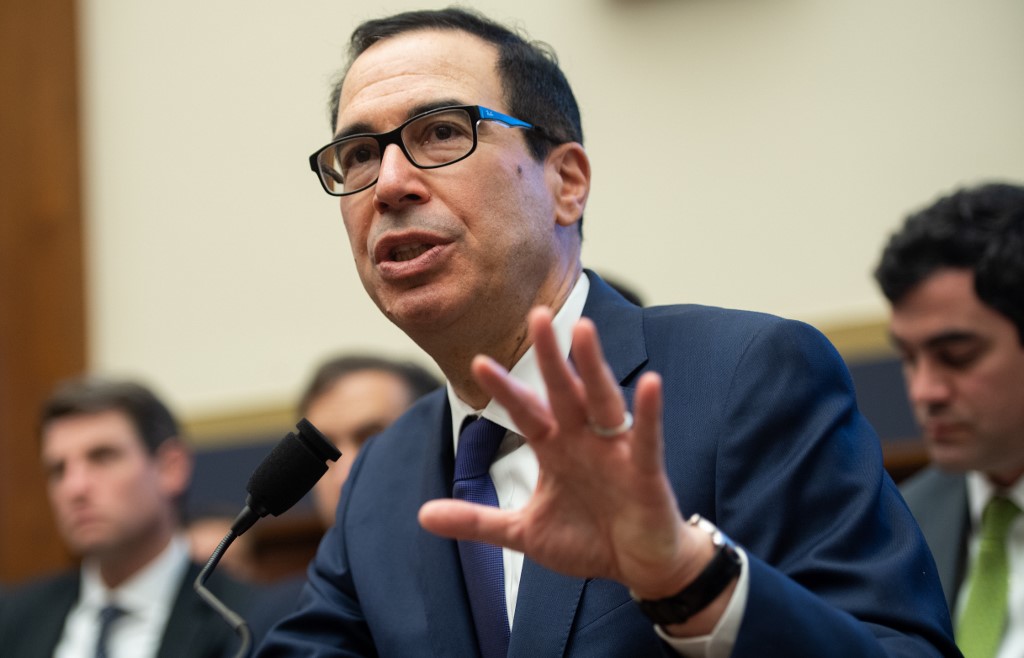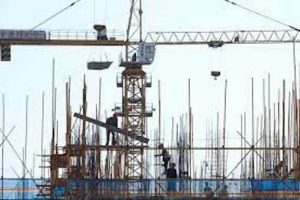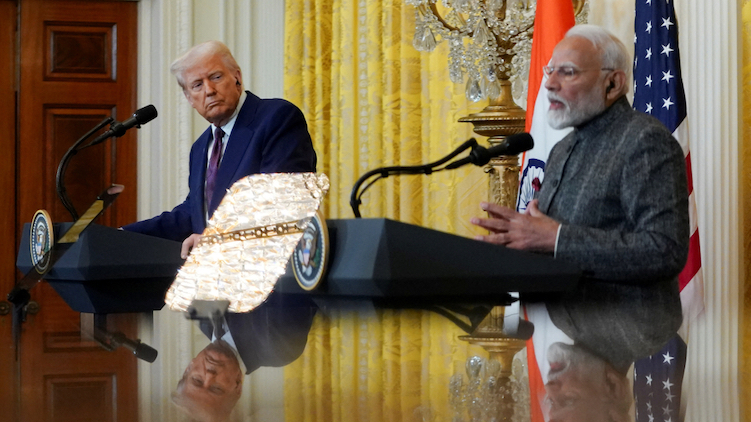The United States will most likely need another injection of aid from the federal government, but officials will take time to gauge the best next steps, US Treasury Secretary Steven Mnuchin said on Thursday.
“I think there is a strong likelihood we will need another bill,” following the $3 trillion already approved by Congress that “we’re pumping into the economy,” he said.
“We’re going to carefully review (during) the next few weeks … and say very clearly how we need to spend more money and if we need to do that,” he said at an event on the economy organised by The Hill, a publication focused on Congress.
But he rejected the new $3 trillion legislation recently approved by the Democratic-controlled House of Representatives, calling it a “partisan bill.”
“That’s not something we’re focusing on at the moment,” Mnuchin said.
The House package includes $1 trillion for state and local governments, another round of cash disbursements to hard-hit American families, funds for hospitals, hazard pay for health workers, and relief for devastated small businesses – measures many economists have been calling for.
In a statement, House Speaker Nancy Pelosi fired back at Senate Republicans, including Majority Leader Mitch McConnell, for dragging their feet.
“Instead of telling laid-off workers to pause, Leader McConnell and the Senate GOP need to come to the negotiating table to help deliver the relief to protect lives and livelihoods,” she said.
Federal Reserve chairman Jerome Powell has said additional aid may be needed and argued it would be worth it despite the cost if it could prevent a more severe economic collapse.
But Mnuchin has argued that there is time to pause before deciding on a new round of measures since much of the initial funds have yet to be deployed into the economy.
The Treasury secretary acknowledged the GDP decline in the second quarter “is obviously going to be a dreadful,” but said he expects to see a “gigantic” rebound in economic growth in the fourth quarter of the year.
Job losses put at 38.6 million
Job losses in the United States are slowing but totalled an unheard-of 38.6 million since the coronavirus pandemic lockdowns began, while officials debate what additional steps will be needed to rescue the beleaguered economy.
Another 2.43 million Americans were put out of work last week, fewer than the previous week but still among the highest figures on record, according to the latest Labor Department data released on Thursday.
Meanwhile, other reports showed US housing sales collapsed last month, while manufacturing continues to decline.
Initial claims for unemployment benefits appeared to have passed the peak hit in late March, but economists say joblessness is likely worse than the figures indicate since many people do not qualify for traditional aid.
“The dramatic spike in unemployment claims is trending down, but it still completely overshadows any precedent,” Kate Bahn, director of Labor Market Policy at the Center for Equitable Growth, said on Twitter, noting that the latest number was three times higher than the record prior to the pandemic.
Democrats in Congress wanted the Republican-controlled Senate to pass a $3.3 trillion spending measure approved by the House of Representatives last week to revitalise the economy, but President Donald Trump’s administration has rejected the bill as he encourages more state government to loosen the lockdowns.
“We did the right thing, but we now want to get going… you’ll break the country if you don’t,” he told African American leaders in a visit to Michigan, a key election battleground state.
The coronavirus pandemic has killed 93,406 people in the US and infected nearly 1.6 million others, according to John Hopkins University, despite widespread business shutdowns from mid-March to stop the virus’s spread.
Second round of layoffs
Weekly jobless claims declined but they remain well above any week during the 2008 global financial crisis and are more in line with job losses in the Great Depression last century.
“Forget the idea that they are coming down. If anyone thinks that 2.5 million new claims is anything but disastrous, they are deluding themselves,” economist Joel Naroff said, warning that the economy is in the midst of a second round of layoffs.
The latest weekly number also does not include the 2.22 million people who applied for a federal program aimed at contractors and self-employed workers who would not normally qualify for traditional benefits.
Home sales plunge
Adding to the building picture of the damage, the National Association of Realtors (NAR) said existing home sales – a key sector in the world’s largest economy – plummeted in April, the first full month the lockdowns were in effect.
But realtors and economists are optimistic they will pick up quickly as the economy reopens due to very low borrowing rates.
Sales plunged 17.8% last month, dropping in all parts of the country, with sales in western states hit hardest, falling 25% compared to March.
NAR’s Chief Economist Lawrence Yun said home sales have been “temporarily disrupted” by the pandemic but pointed to a year-on-year price increase of 7.4% as evidence that “listings that are on the market are still attracting buyers.”
A Philadelphia Federal Reserve Bank monthly report released Thursday showed a slight improvement in manufacturing activity in the region the bank covers, though it was rebounding from a 40-year low in April.
AFP























